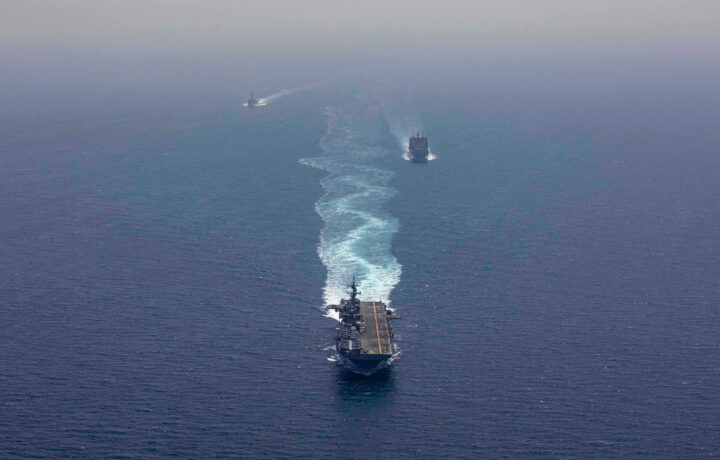Last month, a squadron of United States Air Force F-35 Lightning II stealth fighters was deployed to the U.S. Central Command (CENTCOM) Area of Responsibility to help defend the interests, promote regional security, and safeguard freedom of navigation in the region. The fifth-generation fighters were sent as part of the United States’ commitment to ensure peace and security in the region and to support efforts to defeat ISIS in Syria.
Though not explicitly stated, the F-35s – which were joined by a number of F-16 Fighting Falcon fighters – were also sent as a deterrent to Iran, as tensions remain high between Washington and Tehran. It followed a number of incidents in the Strait of Hormuz and the Gulf of Oman.
Iranian forces had attempted to seize two commercial oil tankers and even fired on one on July 5. In that second incident, an Iranian vessel was approaching the Richmond Voyager and opened fire on the tanker, hitting the ship near the crew’s living quarters. The Iranians only broke off their assault when the U.S. Navy’s USS McFaul (DDG-74) – an Arleigh Burke-class guided-missile destroyer – arrived on the scene.
The Strait of Hormuz remains a critical chokepoint between Iran and Oman, while the Islamic Republic has harassed, attacked, or seized nearly 20 internationally flagged merchant vessels in the past year.
In coordination with regional allies, partners, and the U.S. Navy, the U.S. Air Force’s F-35s will partner with A-10 and F-16s already in theater helping monitor the Strait of Hormuz.
CENTCOM Sending the Marines
On Sunday, more than 3,000 U.S. Sailors and Marines of the Bataan Amphibious Ready Group (ARG) and 26th Marine Expeditionary Unit (MEU) arrived in the Middle East, as part of the pre-announced Department of Defense (DoD) deployment. The Bataan ARG departed Norfolk, VA on July 10 with Amphibious Squadron 8, Fleet Surgical Team 8, Tactical Air Control Squadron 21, Helicopter Sea Combat Squadron 26, Assault Craft Unit 4, Beach Master Unit 2, and the 26th MEU.
The amphibious assault ship USS Bataan (LHD 50) – which is essentially the size of a small aircraft carrier and can carry more than a dozen rotary-wing and fixed-wing aircraft – entered the Red Sea after transiting from the Mediterranean Sea through the Suez Canal. It was escorted by the dock landing ship USS Carter Hall (LSD 50).
According to CENTCOM, Bataan ARG/26th MEU units bring to the region additional aviation and naval assets, as well as more U.S. Marines and Sailors, providing greater flexibility and maritime capability to U.S. 5th Fleet. The USS Bataan operates with the MV-22 Osprey tilt-rotor aircraft and the AV-8B Harrier attack jets, while it also is equipped with several amphibious landing craft.
The docking landing ship is further able to provide support during operations with a variety of rotary-wing aircraft, tactical vehicles, and amphibious landing craft.
“These units add significant operational flexibility and capability as we work alongside international partners to deter destabilizing activity and deescalate regional tensions caused by Iran’s harassment and seizures of merchant vessels earlier this year,” U.S. Fifth Fleet spokesman Cmdr. Tim Hawkins said via a statement.
USS Bataan and USS Carter Hall will join assets including U.S. Air Force F-35 and F-16 fighter jets, as well as the U.S. Navy Arleigh Burke-class guided-missile destroyer USS Thomas Hudner (DDG-116), which was also deployed to the region last month.
Beyond Iran and ISIS
Iran is also not the only threat that the U.S. military’s CENTCOM now faces. Russian aircraft have repeatedly harassed American MQ-9 Reaper drones, while there have been a number of close calls with American fighters over Syria.
As a result, a number of F-22 Raptors were rushed to the region in June. Those aircraft have since returned home, but the U.S. doesn’t appear to be ready to back down due to aggressive actions from Tehran or Moscow.




